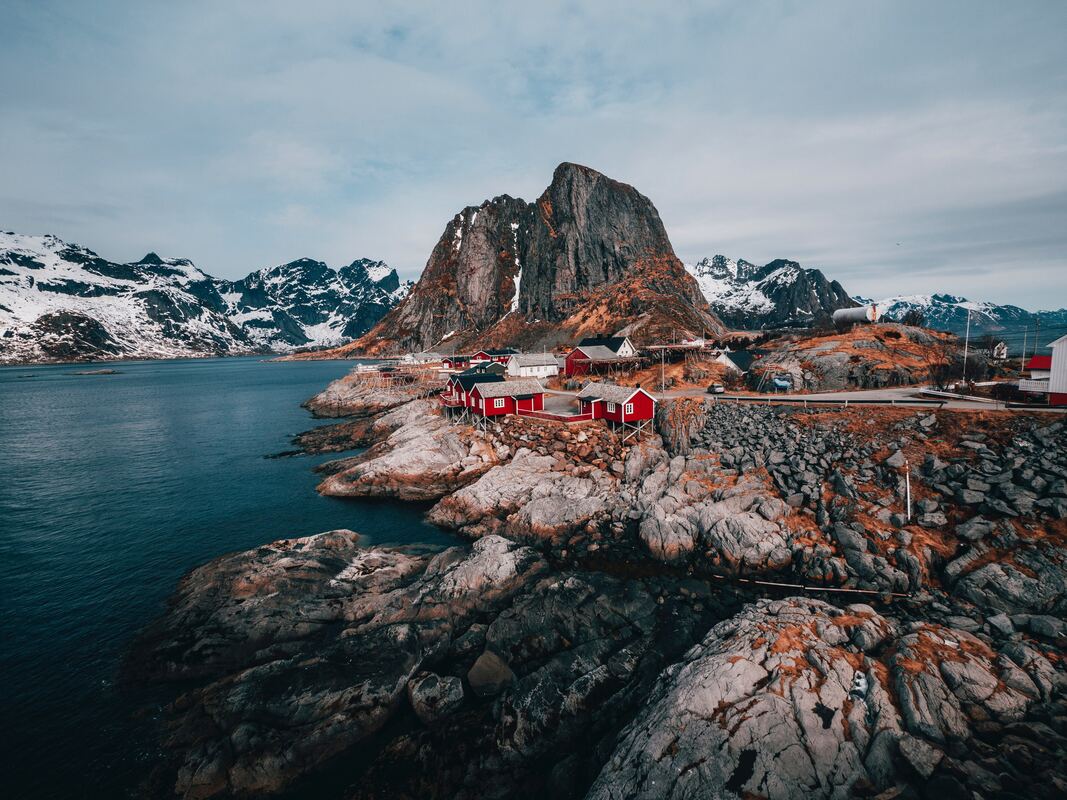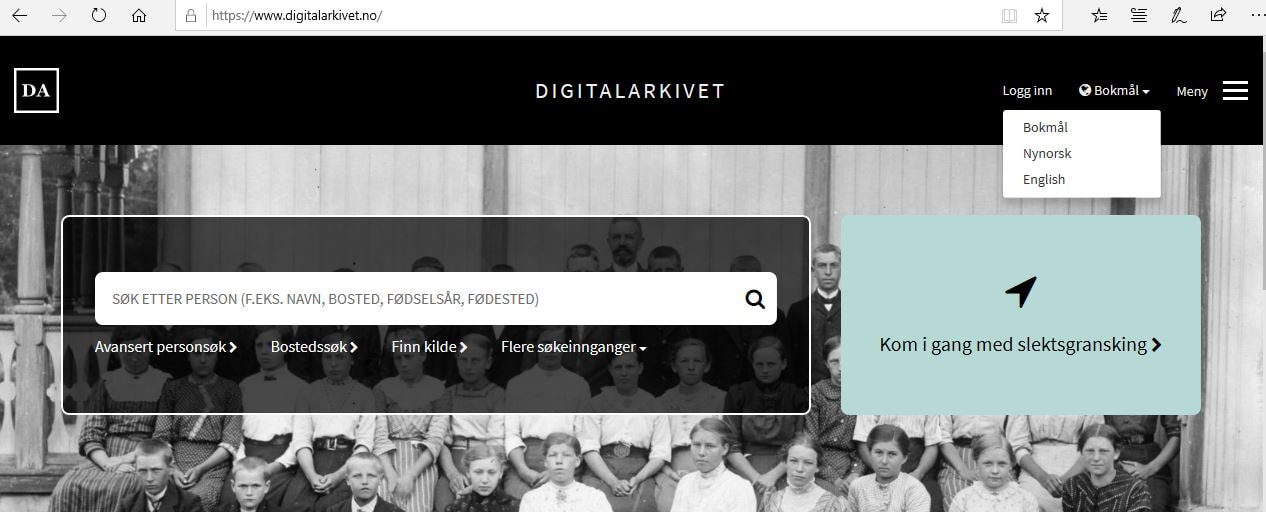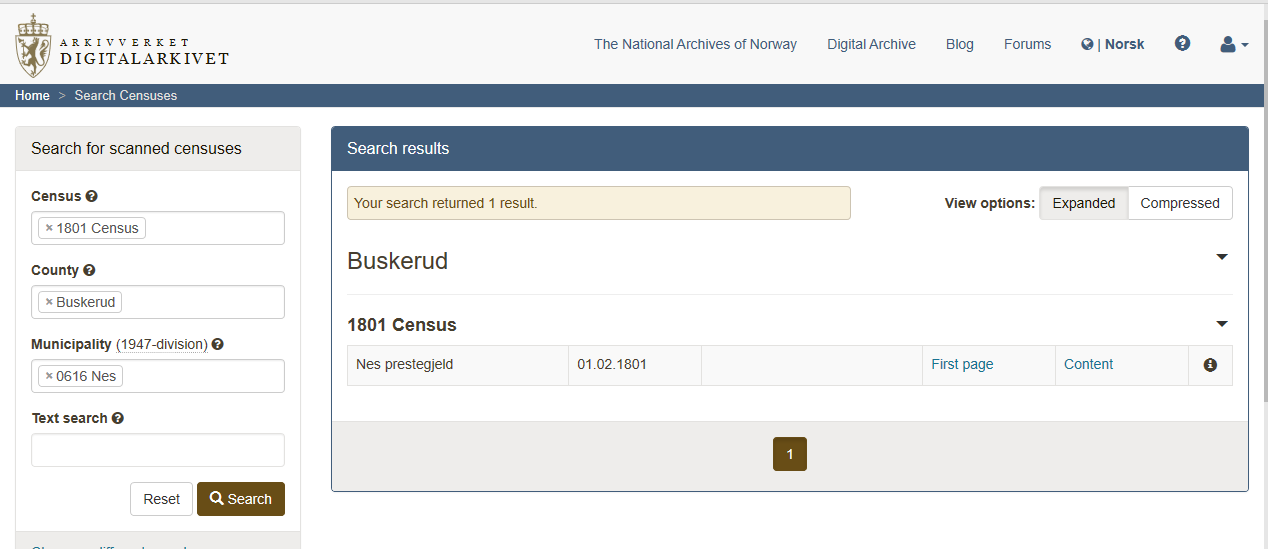|
Even though I have no Norwegian ancestors (to my knowledge), I’ve been having fun delving into the resources of DIGITALARKAVET in preparation for a research project. This site contains a plethora of key documents for anyone whose roots are from Norway. Those with Norwegian ancestors are likely familiar with this site. For those that aren’t, here are some of the tips I learned as a newbie to this site. There are many resources for people searching for their Scandinavian roots but the DIGITALARKAVET site contains all those documents we genealogists love: birth, marriage, death, census records plus emigration records. The home page has the option of viewing the page in English (upper right dropdown box). I recommend that you use this option to get your bearings Once you’ve chosen “English”, you will see that in addition to the search button you can view the following topics: Trace Your Ancestry. This area contains general information about starting your research. They also include examples of searches and best practices. Exploring the Digitised Archives. With in this section you can learn about the information available to search online and there are additional choices of Church Records and Census Records. More on that section below. Digital Photo Archives This area gives you an overview of the photo collection and usage. Historske Fotos This collection of photos includes pictures from Norway as well as other locations. You can filter on a location such as Buskerud to streamline. I’ve found that most photos have generic captions, but it is fun to see photos of people and places in each region. Here are some tips for using this data. To access the Census Records, use this link. You will get to a page that looks like this. Be sure to choose English at the top right before you proceed. With a dropdown for each of the boxes, you can easily filter by the census year, county and municipality. You can try searching further with the text search. Once you filter by census year and county, you will see the options to view. In the example above I’ve filtered on the 1801 census of Buskerud. Before you jump in, take some time to click on information symbol (the little exclamation mark to the right of each line item). This pop up will tell you what specific locations are included in that census. Some censuses are merely statistical and only include counts rather than a listing of individuals. I’ve found are the 1801 and 1865 censuses the most useful. Look for your region as results may vary. Once you’ve found the census in the region of interest, click on “content”. This page provides a list of the contents and location numbers. By clicking on the numbers, you’ll go directly to that section of the census. If you choose “first page” to get to the digital census records, you’ll start at the very beginning of the record. This may be useful if you only know the general area that your ancestor is from but not the municipality. Another way to get to areas within this site is to leverage FamilySearch Wikki sites for Norway. If you know your county in Norway, you can view a page with links to various resources including the DIGITALARKAVET. Here’s an example of a page showing the resources for Sigdal, Norway. It’s a useful way to see what is available at a glance. (Some links appear to need updates, but you can find the census records on DIGITALARKAVET.) What information can you find in the census records? Like the United States, they contain the name of the head of household, spouse and their children and ages plus anyone else living in their home. In addition, the farm name is a critical piece of information found in the census record. Here’s an example of a family in the 1801 census for Nes I Hallingdal. They are living at the Gudbrandsrud farm. Husband Osten with his wife Kari, two children and a servant. If you have a general idea of where your family is from in Norway, the census records will help you piece together key information such as the farm name. Doing research within your family documents as well as church records here in the states also will help you identify the farm name and where your ancestors were from. Once you have the farm name, you can leverage the Bygdebokers which contain the history of the community and parishes. They contain information about the generations and can help you piece together your family history.
Equally important are the church records for helping us ensure we have identified the correct family. We’ll look at the church records next time. Lykke til!
0 Comments
Leave a Reply. |
AuthorWith a lifelong passion for genealogy and history, the author enjoys the opportunity to share genealogy tidbits, inspiring others to research and write their family story. Archives
July 2024
Categories |







 RSS Feed
RSS Feed